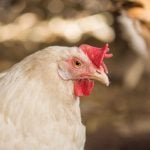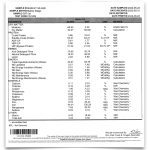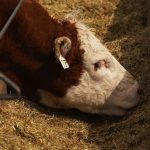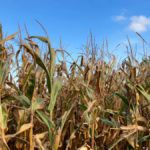
Tag Archives silage

Rain aids some Saskatchewan crops
Soil moisture largely adequate
There was some relief for crops in Saskatchewan following sporadic showers. The provincial agriculture department said farmers are hoping for more rain to aid head and pod filling, but the weekly crop report for the week ended July 28 noted that more moisture wouldn’t help the yields for more advanced crops.

Corteva showcases new BMR silage varieties at Canada’s Outdoor Farm Show 2024
Corteva Agrisciences is showcasing its new Boltava brand of brown mid-rib silage corn hybrids at Canada's Outdoor Farm Show near Woodstock.

Unpacking an oat silage feed report
Understanding results and applying the information from a feed test is key to developing balanced rations
You’ve collected representative samples of feed and sent them for analysis. Interpreting the results and building a balanced ration is the next step. (see ‘Certificate of Analysis’ report example at bottom) Moisture and dry matter: Moisture represents the amount of water present in a feed sample. Dry matter is what remains after water is removed. Moisture […] Read more

Interpreting a silage feed test
A ruminant nutritionist unpacks the numbers from a real feed test
If you want to know the nutrient quality of forage, you must have it analyzed. It always pays to test dry forages, but it’s also worth testing silages, grains and water. When comparing different feeds, always compare the values on a “dry basis” to remove the moisture effect of results. Barry Yaremcio of Yaremcio Ag […] Read more

Silage quality versus quantity: The beef producer’s dilemma
If it has not already arrived, silage season looms for many cow-calf and feedlot operators. While it is not always fair to generalize, it seems to me that if we compare the dairy to the beef sector, one of the biggest differences in the silage program management is the dairy producer’s focus on quality. Beef […] Read more

Balers evolving to make silage and run non-stop
Given the short haying windows, Adam Verner sees growth potential for wet hay and silage balers. But manufacturers still face challenges around speed, bale density and cost
The earliest round balers were amazing but frustrating machines. During forage season, I would exhibit a semi-permanent crick in the neck combined with a disturbing vocabulary of profanities. Constant fear of a plugged pickup, a twisted belt or a roller bearing displaying the telltale signs of smoke before the fire plagued my working days. These […] Read more
Warm season crops and cool climates
Research on the Record with Reynold Bergen
According to Statistics Canada, silage corn acreage was 26 per cent higher in 2015-19 than in 2010-14. Most of this increase occurred in the Prairies. Achieving corn’s potential will depend on whether plant breeders can successfully adapt this warm-season plant to Canada’s cooler climate. Plants contain two kinds of carbohydrates. Non-structural carbohydrates are starches and […] Read more

Six tips to make forage inventory management pay
Small actions can make a big difference when looking ahead to assess the year’s feed requirements
Back in November, Les Halliday was fielding calls from Maritime cattle producers already short on feed for winter. With difficult weather and loss of land for forage production in Atlantic Canada affecting winter feed supplies for many producers, Halliday, beef specialist with the P.E.I. Department of Agriculture, has seen how accurate forage inventory management can […] Read more

Silage packs a punch when harvested carefully
Protect your investment with these tips on everything from harvest timing to inoculants
For some producers, silage is a mainstay, but for others who may be new to the process, there is a learning curve. Regardless of experience, there are several variables producers must consider when ensiling a crop. Gains or losses can occur during seeding and feeding silage. However, management during harvest may be pivotal to promote […] Read more

Math 101 for beef producers
Nutrition with John McKinnon
When I discuss various aspects of nutrition with producers, I often sense confusion when it comes to “as fed” versus “dry matter” (DM) conversions. Such conversions have a profound effect on our ability to predict feed intake and on our understanding of ration nutrient concentration, feed costs and on cost of gain calculations. If one […] Read more



